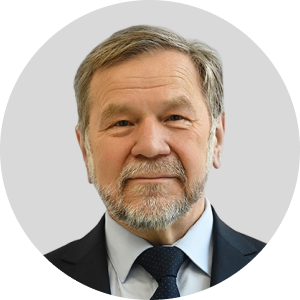The journal «New Research» is a specialized peer-reviewed journal devoted to topical issues of developmental physiology and psychophysiology, pedagogy – including school and preschool education, physical education and health culture, and hospital pedagogy. There are practically no journals of similar scope.
The journal publishes literature reviews, theoretical articles, and the results of experimental research. A significant part of the publications represents fragments of authors’ dissertations. The journal issues include the following sections: Discussion Club, Articles with Comments, Methods, Reviews, etc.
New Research was founded in 2001 and is issued quarterly
ISSN: 2072-8840
eISSN: 2949-5377
Russian mass media certificate: ПИ №77-13217 (June 29, 2002)
Publisher: FSBSI ICDHA (formerly FSBSI IDP RAE)
- 8 Gorodskaya St, Moscow 115191
- +7 (916) 950-11-63
- +7 (499) 245 04 33
- Editorial email (for submissions and correspondence): almanac@mail.ru
- Executive secretary: Dogadkina Svetlana Borisovna
1.5.
Biological Sciences
1.5.5. Human and Animal Physiology
1.5.23. Developmental Biology, Embryology
1.5.24. Neurobiology
5.8.
Pedagogy
5.8.1 General Pedagogy
5.8.2. Theory and Methods of Teaching and Upbringing (by Areas and Levels of Education)
5.8.4. Physical Education and Professional Physical Training
5.8.6. Health-improving and Adaptive Physical Education
5.12.
Cognitive Sciences
5.12.1. Interdisciplinary Studies of Cognitive Processes
5.12.2. Interdisciplinary Studies of the Brain
New research is an open-access journal included into the Russian Science Citation Index (RISC). The articles of New research are assigned a DOI and are available on the E-library website. Publishing your article in New research is a great chance to increase your personal scientific citation index.
For authors
New Research publishes scientific articles, scientific and critical reviews as well as comments on the described scientific specialties and fields of knowledge. The topical sections of the journal correspond to its scope:
- Biological Sciences:
1.1. Patterns of functioning of the main body systems (nervous, endocrine, immune, sensory, motor, blood, circulatory, lymphatic, respiratory, excretory, digestive, reproductive, etc.) in different states of the body.
1.2. Organization, development and specificity of physiological processes at all stages of ontogeny.
1.3. Study of the mechanisms of sensory perception and movement organization.
1.4. Physiological bases of higher nervous activity in animals and mental activity in humans (mechanisms of learning, memory, emotions, consciousness, speech, purposeful behavior organization, etc.).
1.5. Patterns and mechanisms of adaptation of the body to environmental factors (geographical, ecological, social/zoosocial). Study of key genomic and epigenetic mechanisms that determine the resistance of the human body to the combined effects of cold, hypoxia and other adverse environmental factors.
1.6. Patterns and mechanisms of biorhythmological organization of functions.
1.7. Physiological bases of health, healthy lifestyle and longevity.
- Psychology:
2.1. History and methodology of psychophysiology.
2.2. Methods of psychophysiology.
2.3. Psychophysiology of sensory and perceptual processes.
2.4. Functional human states, emotions and stress, adaptation mechanisms.
2.5. Cognitive psychophysiology (cognitive neuroscience).
2.6. Systemic psychophysiology.
2.7. Psychophysiology of development and learning.
2.8. Psychophysiological mechanisms of movement.
2.9. Psychophysiology of individual differences (differential psychophysiology).
2.10. Applied psychophysiology.
2.11. Psychology of a student as a subject of the educational environment at different levels of education (pre-school, school, university, postgraduate, retraining), his or her personal development.
2.12. Professional formation and development of the individual at different stages of his/her life. Psychological aspects of pedagogical activity. Professional pedagogical awareness and self-awareness.
2.13. Psychology of the educational environment.
2.14. Psychodiagnostic activity in the educational environment.
2.15. Psychological aspects of managing the educational process, psychological, pedagogical, and psychological aspects of technologization and informatization of the educational environment.
2.16. Educational process as a unity of training and education. Psychological patterns, mechanisms, features and conditions of the effectiveness of the educational process.
- Pedagogy:
Within the specialty Theory and Methods of Teaching and Upbringing (by Fields and Levels of Education), the specializations Physical Education, Ecology and Fundamentals of Life Safety and Healthcare and Medical Sciences:
3.1. Theoretical bases of creation of informational and educational environment (by branches and levels of education).
3.2. Theory, methods and practice of development and use of electronic educational resources in teaching and education (by branches and levels of education).
3.3. Theory and practice of development, pedagogical and ergonomic evaluation and use of modern information technologies in teaching and education.
3.4. Motivation of students by means of an academic subject (discipline, course, module).
3.5. Formation of a healthy lifestyle through academic subjects and disciplines.
3.6. Designing systems for evaluating students’ educational achievements in subjects (disciplines).
3.7. Use of information systems for monitoring the assessment of the quality of education and training (by areas and levels of education).
3.8. Vocational orientation of students by means of academic subjects (disciplines).
3.9. Methodological training of teachers for professional activities in the system of general, vocational and supplementary education.
Within the specialty Physical Education and Professional Physical Training:
3.10. Methodology and general patterns of development, functioning and improvement of physical education system.
3.11. Factors, conditions and patterns of targeted motor development and improvement in people of different socio-demographic groups.
3.12. Management, administration and marketing in the system of physical education.
3.13. Patterns of management and teaching of human movement in normal and extreme conditions.
3.14. Human motor (psychomotor) development in ontogeny (sensitive periods, labile and involutional periods of motor function extinction).
3.15. Motivation in the sphere of human motor activity.
3.16. Theory and methods of teaching human motor actions.
3.17. Adaptive mechanisms in the sphere of human motor activity.
3.18. Theories and concepts of physical education.
3.19. Contents, directions and methods of physical education of preschool, school children and students.
3.20. Means and methods of physical education in the prevention of antisocial behavior of children and adolescents.
3.21. Physical education of minors in open and closed educational and correctional institutions.
3.22. Contents, directions, methods, techniques and technologies of motor activity of the adult population in various enterprises, sanatoriums, health resorts, rest homes, fitness clubs, at the places of residence, in the family and everyday life.
3.23. residence, in the family and everyday life. 3.23. Health and recreational tourism in the system of physical education.
3.24. Management in the system of professional and applied physical training.
3.25. Theory and patterns of development, functioning and improvement of professionally important physical qualities, formation of applied motor skills and abilities of representatives of various professions (including specialists of law enforcement agencies), whose activity is associated with physical activity and is characterized by the manifestation of complex motor acts.
3.26. Means, methods, techniques and technologies of motor activity of various socio-demographic groups for increasing the resistance of the body to different stress factors of the social and natural environment.
3.27. Contents, directions, means, methods and techniques of physical education of different population groups using information and distance technologies.
- Cognitive Sciences:
4.1. Methodology of interdisciplinary research on the brain and cognitive functions of the nervous system. Organizational levels of the nervous system. Specificity of the systemic level. Systems approach to neuroscience. Psychophysical and psychophysiological problems. Neurophilosophy. Neuroethics.
4.2. Brain development. Molecular and genetic bases for the development of cognitive functions of the brain in health and pathology. Neuromorphological and neurophysiological bases for the development of cognitive functions of the brain in health and pathology. Critical periods of brain development and maturation of cognitive functions.
4.3. Cognitive neuroscience. Study of the brain bases of cognitive functions. Neurolinguistics.
4.4. Social neuroscience. Brain mechanisms of social behavior, social cognition, intra- and intergroup interaction. Mechanisms of the brain’s mirror systems. Neuroeconomics. Neurocultural studies.
4.5. Clinical neuroscience. Study, diagnosis, and correction of disorders of the regulatory and cognitive functions of the brain that occur with lesions of various etiologies. Study, diagnosis, and correction of disorders of the cognitive functions of the brain that occur with acute and chronic stress, deviant behavior, and addiction to psychoactive substances. Neuropsychiatry.
The policy of the editorial board and the editorial council is based on the modern legal requirements of the Russian legislation on copyright and ethical principles supported by the community of leading publishers of scientific journals. A decision on publication depends on the reliability, scientific significance and relevance of the submitted papers.
The journal has joined the Budapest Open Access Initiative (BOAI).
The aim of the journal is to provide scientists and all interested parties with an opportunity to present the most important results of scientific research and practical activities in the field of biological sciences, psychology, pedagogy and cognitive sciences.
The main goals of the journal are
- To unite the scientific and practical potential of scientists and teachers of various specialties who are ready to exchange professional experience and ideas in the field of biological sciences, psychology, pedagogy and cognitive sciences;
- To provide Russian and foreign scientists and specialists with an opportunity to publish the results of their research;
- To widely disseminate the results of researchers’ and postgraduates’ scientific work and practical professional experience.
The journal is intended for researchers, teachers, postgraduate and undergraduate students, as well as anyone interested in biological sciences, psychology, pedagogy and cognitive sciences.
- By submitting an article to New Research, authors thereby express their consent to its publication in the journal, its placement in the public domain on the journal’s website, and the transfer of the text of the article (including references, bibliographic information, etc.) to organizations to which the provision of such information is mandatory, or to other organizations in order to ensure the possibility of citing the publication and increasing the citation index of authors and the journal.
- All articles published in the journal are subject to an independent peer review process, in accordance with the New Research Policy.
- The editorial board is responsible for editing all incoming manuscripts in accordance with the requirements for the publication of scientific literature, as outlined in the GOST P 7.0.4-2020.
- Authors are responsible for the accuracy and veracity of the information presented in the articles.
- The content published in the journal reflects the personal views of authors, which may differ from the editors’ views.
- The responsibility for determining whether to publish or reject submitted papers rests with the editorial board.
- There is no publication fee for authors.
- Authors do not receive publication royalties.
- Articles submitted for publication are provided in electronic format, including all publication components such as text, tables, graphs, charts, etc.
- It is not permitted to reprint, post, or distribute data published and/or posted on the official website of the journal without the prior written consent of the editors.
- The editors are committed to a policy of openness and accessibility. The journal is made available on the Internet immediately after the publication of each issue, without the imposition of a temporary embargo. All relevant information about the journal, including the editorial board/council, the policy and ethical principles, and related documentation, is made available on the journal’s website in both Russian and English.
The editorial board provides archiving of articles published in the journal and their metadata in Russian and English. Archiving, indexing and depositing of articles is carried out by the electronic library eLibrary.ru.
- By submitting an article to New Research, authors thereby express their consent to its publication in the journal, its placement in the public domain on the journal’s website, and the transfer of the text of the article (including references, bibliographic information, etc.) to organizations to which the provision of such information is mandatory, or to other organizations in order to ensure the possibility of citing the publication and increasing the citation index of authors and the journal.
- Authors are responsible for the accuracy and veracity of the information presented in the articles. The content published in the journal reflects the personal views of authors, which may differ from the editors’ views.
- All articles published in the journal are subject to an independent peer review process, in accordance with the New Research Policy. If an article is returned to the authors in accordance with the reviewers’ feedback, a revised version of the article, along with responses to the reviewers, must be returned to the editorial board within two weeks.
- The responsibility for determining whether to publish or reject submitted papers rests with the editorial board.
- There is no publication fee for authors.
- Authors do not receive publication royalties.
- It is not permitted to reprint, post, or distribute data published and/or posted on the official website of the journal without the prior written consent of the editors.
- Submissions must be at least 70% original.
- 1. Articles submitted for publication are provided in electronic format, including all publication components such as text, tables, graphs, charts, etc.
- 2. The editors accept for consideration only manuscripts prepared in accordance with the requirements of the journal. These requirements have been developed over many years and are intended to create a culture of scientific communication. They take into account the requirements of GOST 7.5-98, GOST R 7.0.7-2021, the recommendations of the Higher Attestation Commission, the requirements of international and national databases, modern publishing norms and rules. When submitting an article to the editors, you should follow the following rules:
- 3. Manuscripts and figures should be electronically submitted to the editors at the email address info@ivfrao.ru / almanac@mail.ru as word processing files (*.doc or *.docx)./li>
- 4. The text, figure captions, and references must be typed in 14-point font size, with 1.5 spacing, and in a straight Times New Roman. Margins: top: 2.5 cm; bottom: 2.0 cm; left: 3.0 cm; right: 1.5 cm. The pages of the manuscript should be numbered consecutively, at the bottom, in the middle of the page. The manuscript must be accompanied by a brief abstract (no more than 10 lines) and a list of keywords in both Russian and English.
- 5. The UDC index is provided before the main text. The first page of the submission includes the manuscript title; first, last and patronymic names; academic affiliations and an e-mail address for the corresponding author. All this information should be submitted in both English and Russian.
- 6. Article size. Reviews: no more than 24 pages; experimental research papers: no more than 18 pages; short theoretical and methodological papers: no more than 4-5 pages.
- 7. Experimental research papers should include the following sections: Introduction, Method, Results, Discussion, and Conclusion. The section titles should be presented in capitalized, bold font in the middle of the page.
- 8. The terms, units of measurement and conventional designations used in articles should be generally acceptable. The use of abbreviations for words, names, and titles is prohibited, unless they are part of The International System of Units (SI). Terms and abbreviations should be in Russian, if possible. Units of measurement are provided in Russian transcription. The font size in formulas should match the font size in the text. The numbering of formulas is given in round brackets on the right-hand side: (1); in-text citations are given in square brackets: [3].
- 9. Tables (no more than 3) and figures (no more than 4) should be placed on separate pages and should be numbered in accordance with the general numbering sequence. References to tables should be placed in the text; references to figures should be placed in the right margin of the manuscript.
- 10.In-text citations are indicated by serial numbers in square brackets. For journal articles, the citation format is as follows: (1) authors’ last names and initials (the last names of foreign authors are given in the original transcription, both in the reference list and in the text); when a work with 4 authors is cited, all authors must be listed; for 5 or more authors, only the first 3 authors are indicated followed by “et al.”; (2) the article title; (3) the journal title; (4) year; (5) volume; (6) issue; (7) pages. Articles are listed in alphabetical order, first Russian sources, then foreign ones. Publications in Russian are given in transliterated form (in Latin) after the title “REFERENCES”.
- All papers submitted for publication in New Research are subject to registration by the executive secretary of the journal, indicating the date of receipt. The final decision on acceptance (indicating the date of publication), revision, or rejection is made by the editor-in-chief and is sent to the author not later than 60 days from the date of receipt of the manuscript by the editorial office.
- All papers submitted to the journal for publication are subject to preliminary review for compliance with formal requirements for submitted manuscripts (journal policy and ethics, subject matter, publication requirements, formatting, availability of contact information, etc.).
- A preliminary review of submissions is carried out within 30 days. In case of rejection, a written notification is sent to the author.
- All submissions accepted after the preliminary review are subject to mandatory independent double-blind peer review. Peer review is defined as the review of submitted manuscripts by experts and is performed by at least two specialists in the field related to the topic of the manuscript. Reviewers must have the academic degree of Candidate (PhD) or Doctor of Science. The editor-in-chief may decide to repeat the review process or to request additional reviews (from previous or new reviewers), including in the case of resubmission of the revised manuscript by the author.
- Peer review may be performed by any person, including members of the editorial board and editorial council, provided that there is no conflict of interest (author/reviewer’s subordinate position, scientific supervision/co-authoring, etc.). All reviewers are recognized experts in the scientific fields related to the submitted papers and have articles on the corresponding topics published within the last 3 years.
- As a result of the peer review process, the authors are sent a review adapted by the editors with a consolidated list of the reviewers’ comments, remarks and recommendations for revision of the manuscript, as well as an explanation of the terms of publication.
- As a result of the peer review process, the author(s) receive one of the following decisions:
7.1. Accepted.
7.2. Accepted with minor revisions.
7.3. Not accepted in its current form, significant revision and reconsideration are required.
7.4. Rejected:
7.4.1. Statements and reasoning are not supported by experimental data;
7.4.2. Insufficient or unreliable experimental results;
7.4.3. Errors in organizing and conducting the experiment;
7.4.4. Unsatisfactory presentation of data (lack of clarity, excessively cumbersome text and figures, presentation issues, etc.);
7.4.5. The subject matter of the manuscript does not correspond to the scope of New Research.
The criteria for the decisions are determined by the editorial board of the journal.
- Each review must include the reviewer’s reasoned responses to a set of standard questions, including (in addition to the brief questionnaire) questions that require extended, detailed argumentation.
- In accordance with the editorial ethics of the journal, reviewers are obliged to keep confidential any information about a reviewed manuscript. Reviewers have no right to use or refer to the manuscripts under review prior to publication.
- A positive review is not a sufficient reason to publish an article. The final decision on publication is made by the editorial board of the journal and is recorded in the minutes of the meeting.
- The editorial board of the journal sends copies of reviews or a reasoned rejection to authors. Copies may also be sent upon official request in case of positive decision of the editor-in-chief.
- All reviews are stored in the editorial office of the journal for 5 years.
- The editorial board sends copies of reviews to the Ministry of Education and Science of the Russian Federation upon request.
Publication ethics
The editorial board is responsible for making decisions on the publication of submitted articles.
The publication ethics of New Research is based on the recommendations of international committees on the ethics of scientific publication:
- Code of Conduct and Best Practice Guidelines for Journal Editors;
- Code of Conduct for Journal Publishers and Principles of Transparency and Best Practice in Scientific Publications;
- COPE Ethical Guidelines for Peer Reviewers
- Guidelines for retracting articles
- International standards for editors and authors etc., developed by Committee on Publication Ethics (COPE);
- The European Association of Science Editors (EASE).
Everyone involved in the publication process (authors, reviewers, members of the editorial board, representatives of the publisher) must adhere to the following standards of publication ethics.
In case of suspected violations, the editorial board and council will follow the instructions of инструкциям COPE.
- 1.Ethical principles for the editorial board and publisher.
The editorial board and the editor-in-chief follow the requirements of the legislation of the Russian Federation on copyright, adhere to the ethical principles supported by the community of leading publishers of scientific journals, are responsible for the publication of copyrighted works, which requires the implementation of the following principles:
- relevance and originality of the published article;
- reliability of the results and scientific significance of the published work;
- acknowledgement of the contribution of other authors to the field of research with obligatory bibliographic references to their studies;
- all people who have contributed to the preparation and approval of the text should be listed as co-authors;
- immediate action to correct errors and inaccuracies in articles discovered by the author or identified by the editorial board to prevent their publication.
Unpublished data obtained from submissions may not be used or disclosed to third parties without the written consent of the authors.
Information or ideas obtained during the editing process must remain confidential.
The editor has no right to allow the publication of information if there is reason to believe that it is plagiarism or contains material prohibited from publication. If necessary, the editorial board is ready to publish corrections, clarifications, refutations, and apologies.
The editor, together with the publisher, cannot leave unanswered claims regarding the reviewed manuscripts or published articles. In case of conflict, they must take the necessary measures to restore violated rights.
- Ethical principles for reviewers.
In accordance with its policy, the journal uses double-blind peer review. The reviewers must be impartial and comply with the following conditions:
- the manuscript under review is considered a confidential document that cannot be transferred to third parties for review or discussion without the permission of the editorial board;
- the reviewer is required to provide an objective and reasoned review of the article;
- personal criticism of the author is unacceptable;
- unpublished data may not be used by the reviewer for personal purposes.
A reviewer who believes that he/she is not sufficiently qualified to review the manuscript or cannot be objective (e.g., due to a conflict of interest) must inform the editor and ask to be excused from reviewing the manuscript.
- Ethical principles for authors.
The author(s) bear personal responsibility for the relevance, novelty and reliability of the content of the article and agree to comply with the following conditions:
- knowingly erroneous or falsified statements are unacceptable;
- description of only real facts, events, assumptions, etc;
- mandatory attribution of fragments or thoughts borrowed from other publications;
- excessive borrowing and plagiarism of any kind are unacceptable. This includes unformatted quotations, paraphrasing, or appropriation of other people’s ideas;
- providing references to all studies used in the preparation of the article;
- it is unacceptable to submit a previously published article or a manuscript under consideration by another journal;
- all people who have contributed to the article should be listed as co-authors;
- it is unacceptable to list as co-authors people who have not contributed to the article;
- if any errors or inaccuracies are discovered during the peer review process or after the article is published, they must be reported to the editorial board as soon as possible.
All materials published in the journal are subject to copyright (including design). Their distribution, copying and use on other websites or Internet resources, as well as the use of related information or objects in any other way without the prior consent of the copyright holder is prohibited.
Copyright applies to all articles published in the journal, is protected by law, and can be defended by authors in court.
- 1.Publication of original articles is the first priority of the journal. Multiple (duplicate) and secondary publications in New Research are prohibited. Multiple (duplicate, redundant, etc.) publication is defined as the publication of an article that is substantially identical in content to a paper already published in a printed or electronic issue. Secondary publication is the republication of an article previously published in New Research.
- 2.When submitting a manuscript to the editors, authors should inform the editor-in-chief of any previous publications of the submitted text (dissertation abstracts, conference papers, presentations of a previously published article, book chapters). Copies of these materials should be attached to the submitted article. This will help the editors decide whether the submitted article can be classified as multiple (duplicate) publication.
- 3.The editors reserve the right to check in international databases whether the authors have other publications. If it is found that the authors are attempting to submit a secondary or duplicate publication without notification, the editors reserve the right to reject the manuscript. If, after publication in New Research, it is discovered that a similar article has been published in another journal and the authors have not informed the editors, a notice of multiple publication will be published in the next issue, with or without the authors’ explanation or confirmation.
- 4.Re-publication is carried out in strict accordance with international copyright laws, ethical standards, and at the discretion of the editorial board.
- General Information.
The Committee on Publication Ethics (COPE) defines a conflict of interest in its guidelines as follows: A conflict of interest occurs when authors, reviewers, or editors have an underlying interest that could influence their judgment about the material to be published. A potential conflict of interest occurs when there are financial, personal, or professional circumstances that could influence a reviewer’s or editor’s scientific judgment and, consequently, the editorial board’s decision to publish an article.
- Conflict of interest commitments.
New Research does not require a formal conflict of interest declaration. However, when submitting an article to the journal, the author is expected to declare that
- all sources of funding for the study are disclosed in the text of the article;
- there are no commercial, financial, personal, or professional factors that could create a conflict of interest in relation to the submitted article.
If there is a conflict of interest, the author may:
- request that a particular editor and/or reviewer be excluded from the review process;
- make an explicit statement of the potential conflict of interest in the cover letter when submitting an article to the editorial board.
Editors and reviewers should declare any potential conflict of interest that could influence the editorial board’s decision.
If there is a conflict of interest between an editor/reviewer and the author of the article, the article will be reassigned to another reviewer.
A conflict of interest declared by a participant in the review process does not mean that the article will not be published.
All interested parties should avoid conflicts of interest in any form at all stages of the publication process. If a conflict of interest arises, the person who first discovers it must notify the editor immediately. The same applies to any violation of generally accepted ethical standards and rules.
Editor-in-chief

EDITORIAL BOARD










EDITORIAL COUNCIL












